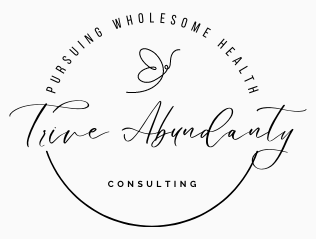Cortisol Reduction Blog Series Post 1
Understanding and Addressing External and Internal Stressors
Introduction:
In our exploration of reducing stress and cortisol from a holistic perspective, it is crucial to identify and address both external and internal stressors. In this blog post, we will delve into the statistics that highlight the prevalence of stress in our lives and examine the common external and internal stressors that can significantly impact our well-being. By gaining awareness of these stressors, we can begin to develop strategies to minimize their effects and promote a more balanced and fulfilling life. Let’s dive in!
The Numbers Speak for Themselves: The following statistics shed light on the widespread presence of stress in our society:
33% report feeling extreme stress.
77% experience stress that affects their physical health.
73% have stress that impacts their mental health.
48% have trouble sleeping because of stress.
50% report levels of stress increasing.
75% experienced moderate to high stress levels in the past month.
80% of people feel stress at work. Stress is the number one health concern of high school students.
High-Risk Groups: Certain groups are more vulnerable to experiencing stress. These include:
- Ethnic minorities.
- Women.
- Single parents.
- People responsible for their family’s health care decisions.
- Individuals with a history of complex trauma.
External Stressors: External stressors encompass various factors that originate from our environment. Common external stressors include:
- Financial concerns.
- Economic instability.
- Family responsibilities.
- Relationship difficulties.
- Housing costs.
- Job instability.
- Family health problems.
- Personal safety.
- Accidents/injuries.
- Abuse (physical, emotional, sexual, spiritual).
- Major life changes.
- Work or school pressures.
- Overwhelming busyness.
- Children and family demands.
- Death of a spouse.
- Divorce or marriage separation.
- Imprisonment.
- Death of a close family member.
- Illness.
- Marriage or relationship challenges.
- Job loss or retirement.
Internal Stressors: Internal stressors are deeply rooted within our thoughts, emotions, and beliefs. They can significantly impact our well-being. Some internal stressors include:
- Pessimism.
- Inability to accept uncertainty.
- Rigid thinking and lack of flexibility.
- Negative self-talk.
- Unrealistic expectations or perfectionism.
- All-or-nothing attitude.
- Unresolved wounds from childhood.
- False belief systems.
- Low self-worth.
- Fear and anxiety.
- Shame and guilt.
- Perfectionism.
- Post-Traumatic Stress Disorder (PTSD) and Complex Post-Traumatic Stress Disorder (CPTSD).
Your Turn: Identifying Personal Stressors
Take a moment to reflect on your own life and consider both external and internal stressors that may affect you. Here are some prompts to guide your reflection:
External Stressors:
- What are the major external stressors in your life?
- How do those pressures impact your stress levels?
- Are there any challenging relationships or family responsibilities causing stress?
Internal Stressors:
- What negative self-talk or unrealistic expectations do you struggle with?
- Are there unresolved wounds from your past that contribute to your stress levels?
- Do you tend to have a pessimistic or all-or-nothing mindset?
Where do I go from here?
If you are interested in going on the cortisol reduction journey, I recommend you grab a journal and keep notes as you read through this blog series. Understanding and addressing external and internal stressors are essential steps toward reducing stress and cortisol levels. By recognizing the common stressors that affect us, we can take proactive measures to minimize their impact on our well-being. You may not notice it right away, but just by looking at, identifying and naming those stressors, you are already bringing down some of the intensity. Stay tuned for the next post!







